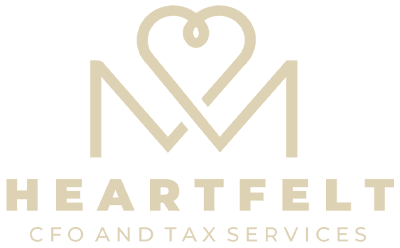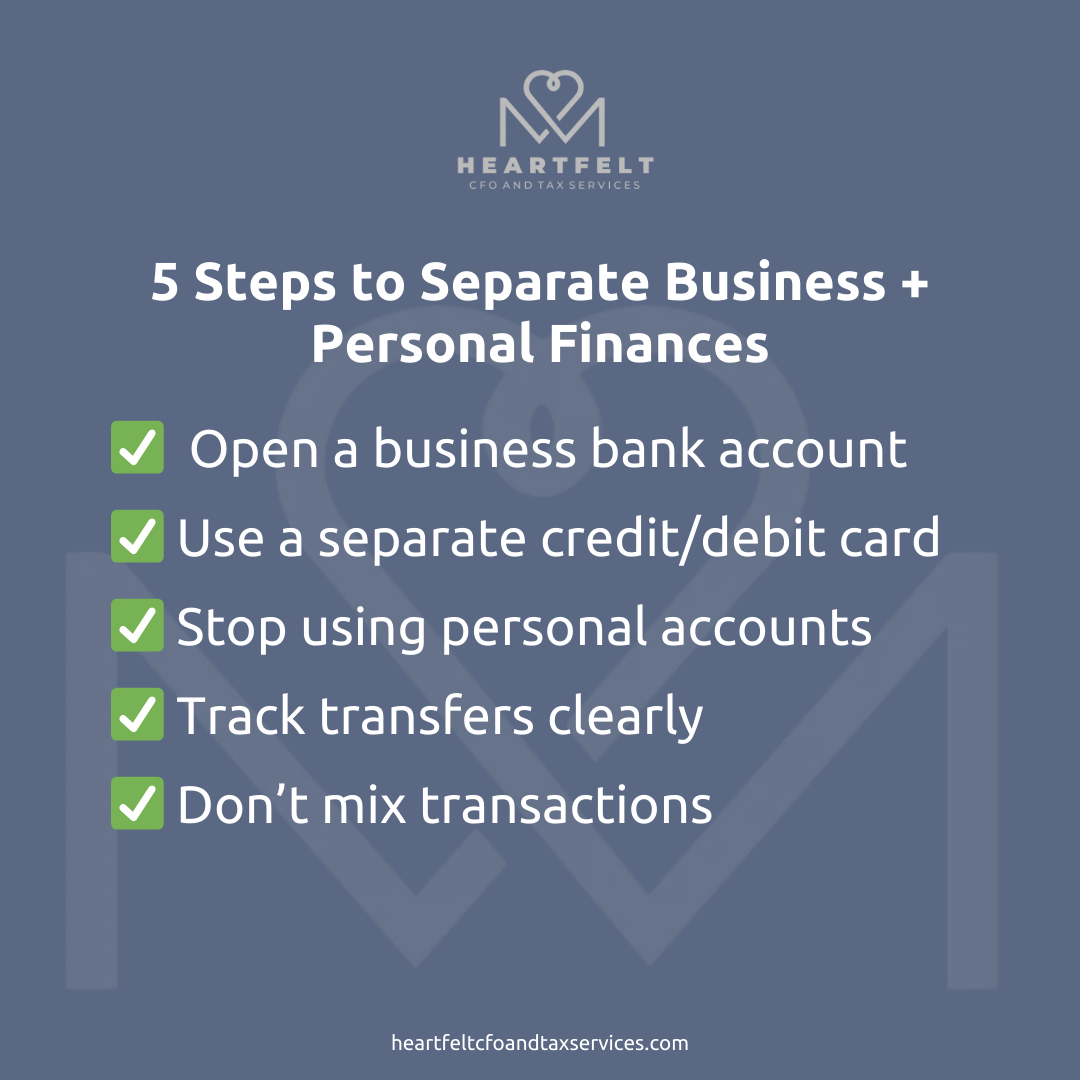It sounds like such a small thing—just open a new account. But for many business owners, the line between personal and business finances is more of a blur than a boundary.
You start the week with good intentions. You plan to “go through receipts later.” You promise to “mark it as business on the credit card statement.” But somehow, come tax time or when it’s time to apply for a loan, that promise turns into a headache of hunting through Amazon orders and food delivery charges wondering: Was that the team lunch or just me being too tired to cook?
If this sounds familiar, you’re not alone—and you’re not bad at business. But it is time to change the system.
Separating your business and personal finances is one of the simplest shifts that can have a massive impact on your stress level, your audit readiness, and your overall confidence in your numbers. And you don’t have to overhaul everything overnight to do it right.
Let’s walk through exactly how to separate your finances—without losing your mind.
Why This Matters More Than You Think
Keeping business and personal expenses together isn’t just messy. It causes:
-
Incorrect financial reports (because expenses are miscategorized)
-
Missed deductions (you’re too overwhelmed to claim them all)
-
Audit risk (blurry lines = red flags)
-
Wasted time for your bookkeeper or tax pro (aka higher fees)
-
A constant sense that you’re not really in control
And the fix? It’s surprisingly easy once you commit.
5 Simple Steps to Start Separating Your Finances
1. Open a Business Bank Account
Even if you’re a sole proprietor, you’re allowed to have a business checking account. Set one up at your current bank or an online business-friendly option.
2. Get a Business Credit or Debit Card
Use this for only business expenses. It makes categorizing so much easier—and helps you build business credit too.
3. Stop Using Personal Accounts for Business (Today)
Draw a hard line. If you must make a business purchase and your business card isn’t handy, reimburse yourself through your business account with a receipt attached.
4. Track Transfers Clearly
If you pay yourself from the business account, label it “Owner’s Draw” or “Owner’s Pay.” Clarity is key.
5. Don’t Mix Payments (Even if It’s Faster)
Avoid splitting transactions (e.g. “I’ll just put half this on the biz card and the rest on my personal”). It gets messy—fast.
Quick-Start Checklist
-
✅ Open a separate bank account
-
✅ Order a debit or credit card for that account
-
✅ Link your accounting software to only the business account
-
✅ Stop using personal accounts for business expenses
-
✅ Start fresh today—don’t wait until the first of the month
Build Your Foundation with Confidence
Getting this one piece in place makes everything easier—bookkeeping, taxes, financial reports, and your own peace of mind.
If you’re ready to get organized and stay that way, here’s how we can help:
Take our quick assessment to assess your business health
Explore our business packages and choose the one that fits your stage
Build your financial foundation with a simple, reliable system that keeps your business organized, minimizes surprises, and gives you peace of mind. Sign up now
And remember, Margo walks you through this and much more inside the Summit Masterclass—a judgment-free zone to get clarity, take action, and stop putting this off.
You can be in control of your business finances. You just need the right systems (and the right support).





